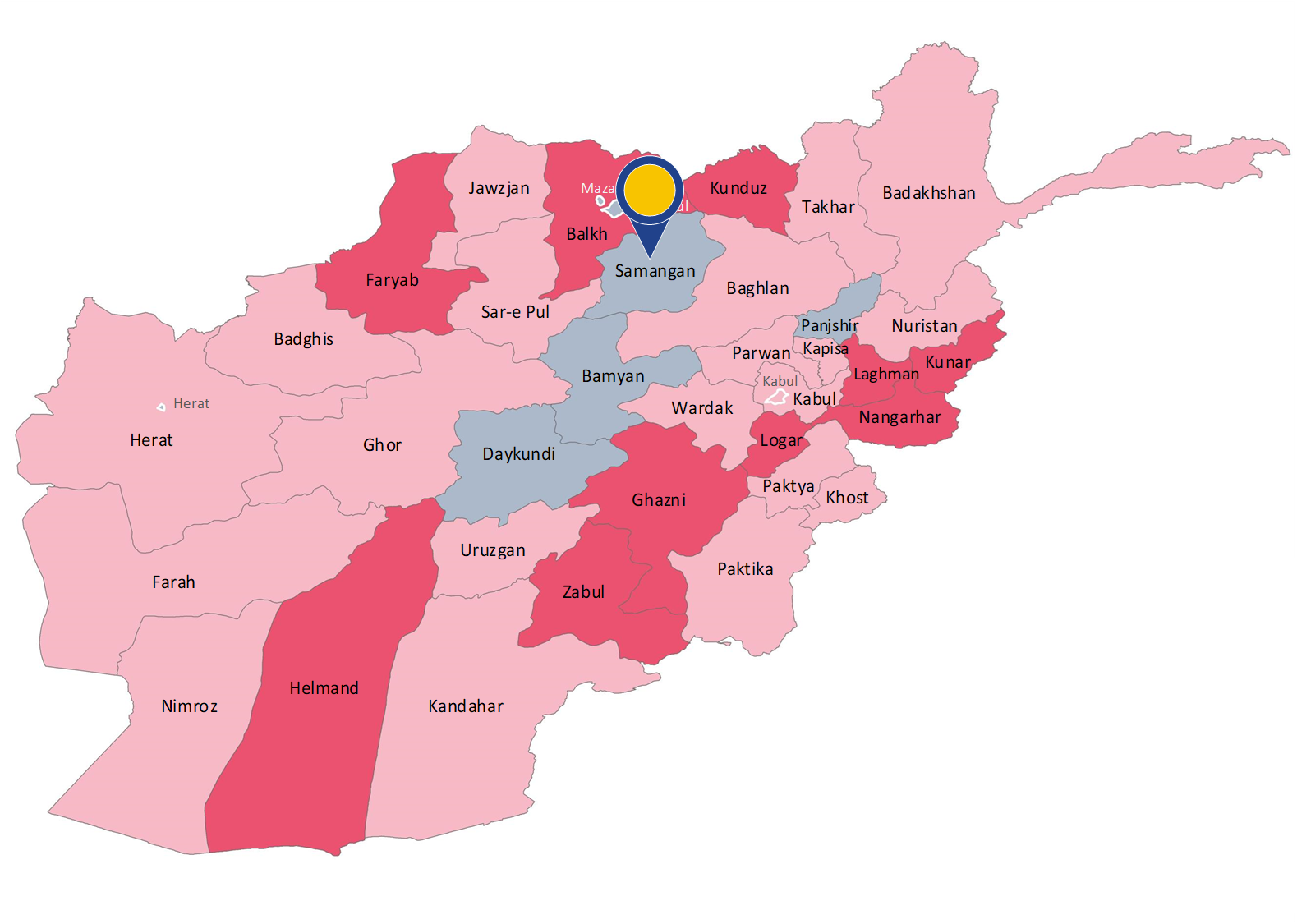|
⚠ |
|
Please note that this country guidance document has been replaced by a more recent one. The latest versions of country guidance documents are available at /country-guidance. |
Samangan province has a population of approximately 430 000. Ethnic groups present in Samangan are Tajiks, Uzbeks, Pashtuns, Hazaras, Arabs, Tatars and Aimaq. The province is located in the north of Afghanistan. It lies strategically, to the north of the Hindu Kush, and borders Balkh, Baghlan, Bamyan, and Sar-e Pul. It is divided into seven districts. The section of the Ring Road from Kabul to Mazar-e Sharif crosses districts of the province.

The Taliban are active in the province, in particular in the Dara-e-Suf-e-Payin district, where the district’s coal mines are considered to be a driving force that exacerbates the conflict in the district. According to governmental sources, as of April 2018, ‘dozens’ of illegal armed groups were active in Samangan, as were pro-government militias. No security incidents specifically attributed to ISKP were recorded by ACLED in Samangan between 1 March 2019 and 30 June 2020.
According to LWJ, five districts were considered under government control, the district of Dara-e-Sufe-Payin was categorised as under Taliban control, and one district was contested.
ACLED collected data on 84 violent events in the period from 1 March 2019 to 30 June 2020 (average of 1.2 incidents per week), of which 70 were coded as ‘battles’, 10 as ‘explosions/remote violence’ and four as ‘violence against civilians’.
Most of the violent incidents in the province were armed clashes, with the majority of attacks by the Taliban on Afghan security forces, including PGMs or local uprising forces, or attacks on their facilities, such as checkpoints and military bases. Operations and attacks have also been carried out by Afghan security forces, for example in Dara-e-Suf-e-Payin district where the Taliban launched several attacks in the reporting period. Other incidents include airstrikes by Afghan security forces and few incidents with use of IEDs causing civilian casualties. The Taliban have also abducted civilians in order to extort money, others have been killed by them.
Further impact on the civilian population included the temporary closure of healthcare facilities in Dara-e-Suf-e-Payin district.
UNAMA documented 45 civilian casualties (11 deaths and 34 injured) in 2019, representing 10 civilian victims per 100 000 inhabitants. This was a decrease of 2 % compared to 2018. Leading causes for the civilian casualties were ground engagements, followed by targeted/deliberate killings and non-suicide IEDs.
RS ranked Samangan in the category of provinces where the number of civilian casualties was between 0 and 25 for the first quarter of 2020, and between 0 and 25 for the second quarter.
In the period 1 March 2019 – 30 June 2020, 3 570 persons were displaced from the province of Samangan, of whom more than 95 % were displaced within the province itself. No conflict-induced displacement from other provinces to Samangan was reported in the same period.
|
|
Looking at the indicators, it can be concluded that indiscriminate violence is taking place in the province of Samangan at such a low level that in general there is no real risk for a civilian to be personally affected by reason of indiscriminate violence within the meaning of Article 15(c) QD. However, individual elements always need to be taken into account as they could put the applicant in risk-enhancing situations.
|
